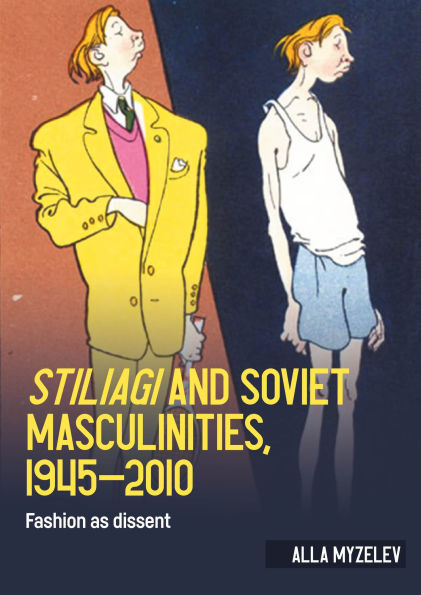Stiliagi and Soviet masculinities, 1945-2010: Fashion as dissent
This book provides an in-depth analysis of the Stiliagi, the Soviet Union's pioneering youth subculture from the late 1940s to the early 1960s. Characterized by their distinctive Western-influenced fashion, affinity for jazz, and resistance to Soviet ideological conformity, the Stiliagi represented a significant cultural shift in post-war Soviet society. The book examines how this subculture, through its embrace of alternative masculinities and nonconformist behaviours, challenged prevailing social norms and influenced Soviet cinema, theatre, and broader cultural discourse. Drawing on rigorous research, the book situates the Stiliagi within the broader context of Soviet and Post-Soviet history, arguing that their legacy persisted well beyond their absorption into mainstream culture. Essential reading for scholars of Soviet history, cultural studies, and subcultural movements, this work offers a nuanced understanding of the Stiliagi’s enduring impact on Soviet identity and cultural resistance.
1147808386
Stiliagi and Soviet masculinities, 1945-2010: Fashion as dissent
This book provides an in-depth analysis of the Stiliagi, the Soviet Union's pioneering youth subculture from the late 1940s to the early 1960s. Characterized by their distinctive Western-influenced fashion, affinity for jazz, and resistance to Soviet ideological conformity, the Stiliagi represented a significant cultural shift in post-war Soviet society. The book examines how this subculture, through its embrace of alternative masculinities and nonconformist behaviours, challenged prevailing social norms and influenced Soviet cinema, theatre, and broader cultural discourse. Drawing on rigorous research, the book situates the Stiliagi within the broader context of Soviet and Post-Soviet history, arguing that their legacy persisted well beyond their absorption into mainstream culture. Essential reading for scholars of Soviet history, cultural studies, and subcultural movements, this work offers a nuanced understanding of the Stiliagi’s enduring impact on Soviet identity and cultural resistance.
130.0
Pre Order
5
1

Stiliagi and Soviet masculinities, 1945-2010: Fashion as dissent
248
Stiliagi and Soviet masculinities, 1945-2010: Fashion as dissent
248Hardcover
$130.00
130.0
Pre Order

Product Details
| ISBN-13: | 9781526182197 |
|---|---|
| Publisher: | Manchester University Press |
| Publication date: | 01/06/2026 |
| Series: | Studies in Design and Material Culture |
| Pages: | 248 |
| Product dimensions: | 6.69(w) x 9.45(h) x (d) |
About the Author
From the B&N Reads Blog
